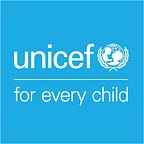Haiti’s border children
Haiti remains fragile and impoverished despite its substantial progress in recovering from the 2010 earthquake. For many Haitians, including children, crossing into the Dominican Republic offers a possible escape from this poverty, but opportunities to exploit children are also rife.
There are few work options on the Haitian side of the border. So, many — like the 13-member family of Joselyne La Guerre (centre) — rely on work in the Dominican Republic. Her father is a farm worker there.
The 360-kilometre border is also extremely porous, with many unguarded crossing points. A boy illegally jumps the border, in the town of Ouanaminthe.
Children are also among the crowds of Haitians who use official border crossings, selling and buying goods in an effort to survive. A boy crosses the bridge to the Dominican city of Dajabón.
Others — including 7-year-old Sylvie (centre) and her aunt, who is blind — flock to the bridge to beg spare change from bus passengers. The bridge is one of four official border crossings.
The back-and-forth movement of Haitians between Ouanaminthe and Dajabón is constant. Dozens, laden with goods, return — crossing the river that separates the two countries. Hundreds wait to go the other way.
Meanwhile, children play in the river. They are unaware that an estimated 2,000 Haitian children are trafficked annually into the Dominican Republic, where many work as servants or are subject to other abuse.
Border patrols, even with the assistance of United Nations peacekeeping soldiers, are unable to stop this trafficking. Peacekeepers patrol the Ouanaminthe crossing.
To help address this need, UNICEF supports the Haitian Police’s Brigade for the Protection of Minors (BPM), which monitors borders to prevent illegal child crossings. A BPM officer questions a woman at the border.
Adults lacking proof of their relation to a child are not permitted to cross. In Ouanaminthe, a girl cries because she must stay with BPM officers until the woman who accompanied her returns with the proper papers.
Another girl (right) is taken into custody after BPM officers found that her older companion did not have proper documentation. The girl was then transferred to a shelter for trafficked children.
Three-year-old Michel is at a UNICEF-supported shelter in Ouanaminthe. Children stay in the shelters until adults return with proper paperwork, their parents are traced or long-term care is arranged.
Marie, 8, and her younger brother have been at the same shelter for a month. They were abandoned by a man who was spotted trying to cross the border with them illegally. Their parents have yet to be located.
UNICEF also assists the NGO Heartland Alliance for Human Needs & Human Rights, which counsels formerly trafficked and other vulnerable children. A Heartland psychologist speaks with a boy in Ouanaminthe.
Another UNICEF-supported national NGO, Réseau Frontalier Jeannot Succés, works in the border city of Fort Liberté. Their workshop with residents describes the dangers trafficked children face.
For traffickers, remote crossings are a prime means of smuggling children into the Dominican Republic. BPM officers walk along a mountain path, used as an unofficial crossing, near Ouanaminthe.
Pierre, 14, crossed the border with friends to find a better life but ended up begging on the streets. Assisted by the Heartland Alliance, he is home again.
“I didn’t know that life [there] could be so hard,” he said.
But, many Haitian children remain extremely vulnerable. The village of Ti-Lori is located beside a mostly unpatrolled highway — a prime illegal crossing point — that separates the two countries.
Desperate parents sometimes give their children to traffickers, hoping they will have a better life. An adolescent village girl (right) has returned after a year as a domestic servant in the Dominican Republic.
Child domestic servants, called ‘restaveks’, are often unpaid, kept from going to school and subjected to violence or other abuse. Another former girl restavek has returned to Ti-Lori.
Other lost children can also find a home. Jules now fosters a 5-year-old boy whom she found abandoned in the border village of Ferrier. When the police could not trace his family, Jules took him in permanently.
Still, many other children risk exploitation and abuse, whether they cross the border willingly or are trafficked. Until their crushing poverty is addressed, they will remain vulnerable. A boy in Ferrier.
Originally published on www.unicef.org/photography in May 2012.
